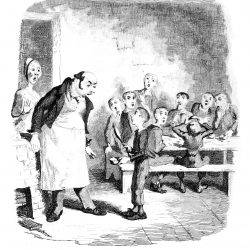August 22, 2017
Employees with higher levels of trust and autonomy at work are more productive
 Employees who feel trusted by their employer to manage how and when they work for themselves can improve their levels of productivity, a new survey suggests. The research by Peldon Rose claims that UK workers rate feelings of trust and autonomy from employers and colleagues as increasingly important in keeping them productive and happy in the workplace. But the survey also shows that many employers are failing to provide employees with the resources and support they need to manage their workload and keep them motivated. Although the majority of staff (59 percent) say they work most productively in the office, a third (33 percent) wish they were more trusted to manage how and when they work and 42 percent say that their office does not support a culture that allows them to work flexibly. Despite the clear value that staff place on trust and autonomy, employers are overlooking an opportunity to create a confident and self-motivated workforce.
Employees who feel trusted by their employer to manage how and when they work for themselves can improve their levels of productivity, a new survey suggests. The research by Peldon Rose claims that UK workers rate feelings of trust and autonomy from employers and colleagues as increasingly important in keeping them productive and happy in the workplace. But the survey also shows that many employers are failing to provide employees with the resources and support they need to manage their workload and keep them motivated. Although the majority of staff (59 percent) say they work most productively in the office, a third (33 percent) wish they were more trusted to manage how and when they work and 42 percent say that their office does not support a culture that allows them to work flexibly. Despite the clear value that staff place on trust and autonomy, employers are overlooking an opportunity to create a confident and self-motivated workforce.







 The creative industries sector accounted for over a third 35 percent) of take-up in the regional office market in the first half of the year, with this sector in particular driving the co-working revolution and the provision of flexible office space. Latest figures in CBRE’s H1 2017 Property Perspective, which monitors the performance of ten regional cities, overall, the UK’s regional office markets saw continued demand in the first half of 2017, with office take-up reaching 2.8 million sq ft, only slightly lower than the five-year average. For the first half of 2017, several cities witnessed improved levels of take-up when compared with the first half of 2016, these include Aberdeen, Edinburgh, Leeds and Manchester. Select locations such as Reading, Maidenhead and Watford also saw a continuation of record rents being set during the first half of the year, which has largely been driven by the delivery of new developments.
The creative industries sector accounted for over a third 35 percent) of take-up in the regional office market in the first half of the year, with this sector in particular driving the co-working revolution and the provision of flexible office space. Latest figures in CBRE’s H1 2017 Property Perspective, which monitors the performance of ten regional cities, overall, the UK’s regional office markets saw continued demand in the first half of 2017, with office take-up reaching 2.8 million sq ft, only slightly lower than the five-year average. For the first half of 2017, several cities witnessed improved levels of take-up when compared with the first half of 2016, these include Aberdeen, Edinburgh, Leeds and Manchester. Select locations such as Reading, Maidenhead and Watford also saw a continuation of record rents being set during the first half of the year, which has largely been driven by the delivery of new developments.


















 It may still be the summer holiday season but if you’re finding it easier than you’d expect to get hold of people, it’s because they’re probably checking their emails on the beach. A new survey by Wrike claims that 73 per cent of British employees work while on holiday. The main reason? They can’t relax unless they know everything is going okay in the office. Those from France and Germany have a slightly more relaxed state-of-mind. While 35 per cent of UK workers said they feel better keeping in touch with the office and the Germans aren’t that far behind, with 30 per cent saying keeping one eye on their work was the key to relaxation; in France only 22 per cent felt the same. Brits also said that working while away was because they were hoping to minimise the amount of work they would have to come back to (22 per cent).
It may still be the summer holiday season but if you’re finding it easier than you’d expect to get hold of people, it’s because they’re probably checking their emails on the beach. A new survey by Wrike claims that 73 per cent of British employees work while on holiday. The main reason? They can’t relax unless they know everything is going okay in the office. Those from France and Germany have a slightly more relaxed state-of-mind. While 35 per cent of UK workers said they feel better keeping in touch with the office and the Germans aren’t that far behind, with 30 per cent saying keeping one eye on their work was the key to relaxation; in France only 22 per cent felt the same. Brits also said that working while away was because they were hoping to minimise the amount of work they would have to come back to (22 per cent).







